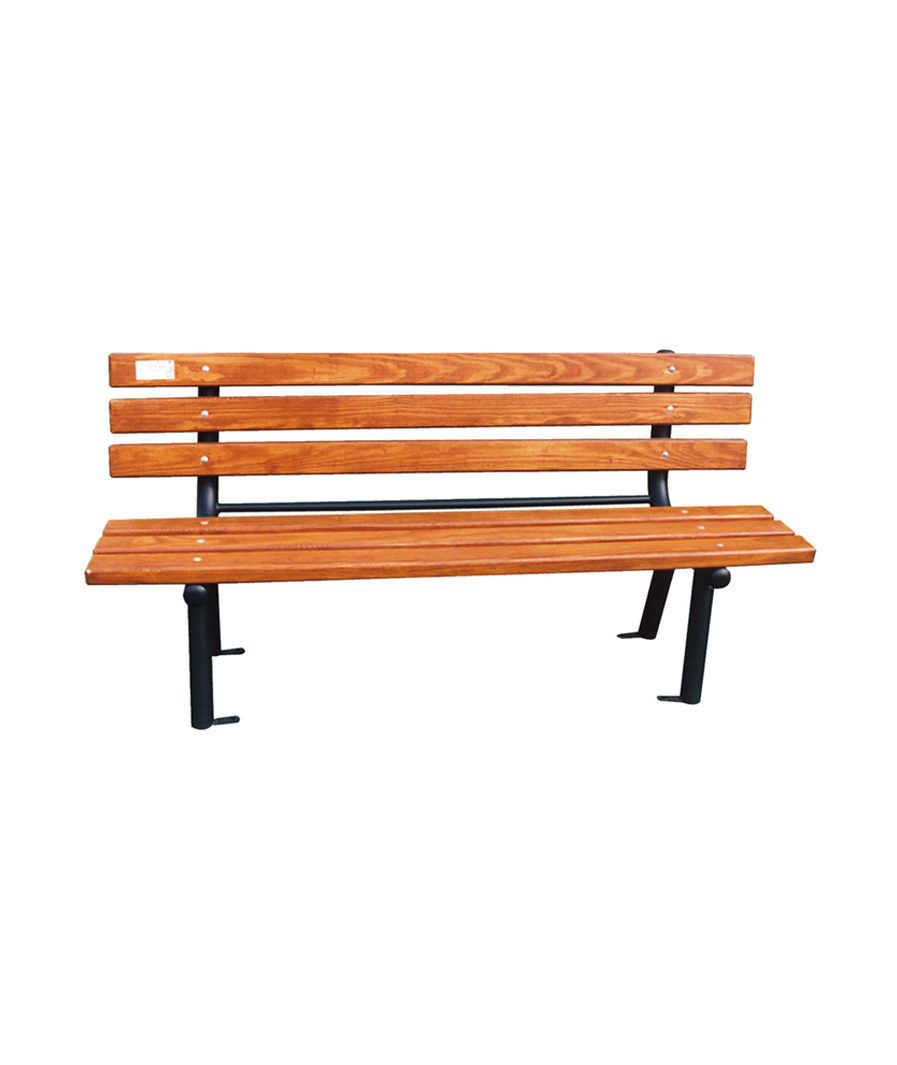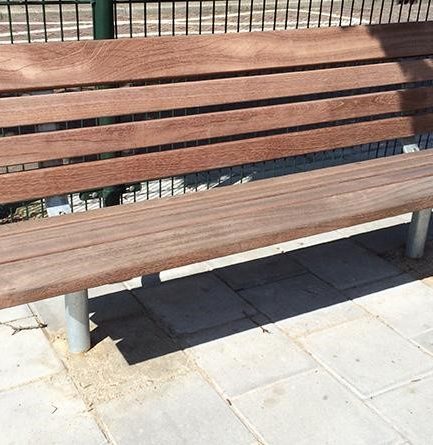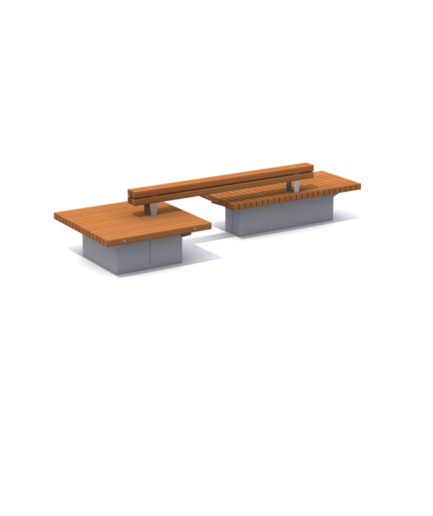BENCH 0020-308
0020-308
The bench is made of metal and wood. The metal frame is made of two 2 ”cross-section tubes, 90 cm long each, fastened to the middle at a blunt angle in such a way that the backwoods and the bench seats are fitted to one side.
The two open ends of each tube are sealed with 2 ”galvanized plugs to seal the interior. On each of the two sides of the tubing, the one intended for the seat and the outside of it are argon two metal tubing elements also 2 “, 3 mm thick, 32 cm long by 20 cm apart, forming with a tube of a trapezoid frame, the opening of which is 30 cm at the base, thus creating the legs of the bench. The upper edges of the legs are cut ellipsoidally in the press so that they are perfectly in contact with the tubing during welding.
The upper end of the outer leg is welded 6 cm from the outer end of the seat tube. The two metallic elements, as configured according to the above description, are 124 cm apart from each other and the length of the metal rod made of pipe ½ ”, each end of which is welded to the inner part of each tube and at a distance of 35 cm. from its edge.
At the bottom of each of the legs of the bench is welded a circular metal, curved in the middle at a height of 3 cm, a plate 17 cm in diameter and 4 mm thick with 3 holes 10 mm in diameter so that it can be secured to floor with a mounting screw 120 mm long.
The wooden parts of the bench are made of 6 elements of composite timber of 180x10x4,5 cm.
Three of them are the seat and the other 3 are the back of the bench. They are attached to the tube with 8X120 mm cartridges.
The first wood (inside) of the seat is screwed so that it extends 5 mm from the end of the tube. The same is true of the first wood (at the top of the back). The remaining wood on both the back and the seat are screwed 2 cm apart.
All the wood, both the back and the seat, are 25 cm in length and on the metal frame of the bench.
TIMBER
The wood used is composite non-stick Swedish pine timber, in accordance with EN 351. It is manufactured with special compound (welding of wood) in different sections depending on the intended use.
COMPOSITE wood is 40% stronger than whole wood. It has a strength of 360 kp / m2 and a specific weight of about 480 kg / m3.
It contains about 15% moisture
Contains minimal juices (resin) compared to other pine family trees in other countries (weather in northern Sweden up to -25 ° C)
It has thermal conductivity s = 0.10 Kcal / Mho and sound insulation 3.5 times greater than concrete or brick of equal thickness.
It has antimagnetic properties and is a poor conductor of electricity
It is resistant to fire and is classified in categories F30 and F60 (by DIN 4120) according to its cross-section.
When the outer part of the cross-section burns, its interior protects and retains its durability.
It is processed just like commercial wood
It retains its shape and distorts or creates minimal fractures
Annual wood rings are usually perpendicular to the long side of the cross-section with a significant increase in the mechanical strength of this surface, if applied to floors.
All corners of the wood are planed to a radial of 5 mm minimum.
METALLIC ELEMENTS
The metallic elements used in the manufacture of the equipment (screws, joints, etc.) are either made of thermo-galvanized metal or electro-galvanized with precast sandblasting or stainless steel. The dimensions and cross-sections of the metallic elements are sufficient to accommodate (with an appropriate safety factor) the loads for which they have been designed to withstand corrosion and adverse weather conditions.
PAINTS
The varnishes and paints that protect the wooden parts are specially designed for the climate of our country and are absolutely harmless to the users (they do not contain lead, chromium, cadmium or other heavy metals) and give high strength to our constructions.
For their anticorrosive protection, the metal parts are processed to release them, followed by a coating of polyzinc (zinc) and then electrostatic, two-layer polyester powder coating.
All production work processes for the processing of raw materials are carried out according to
The ISO9001: 2015 quality system
The environmental management system ISO14001: 2015






